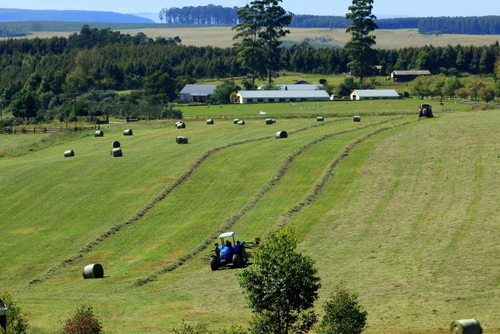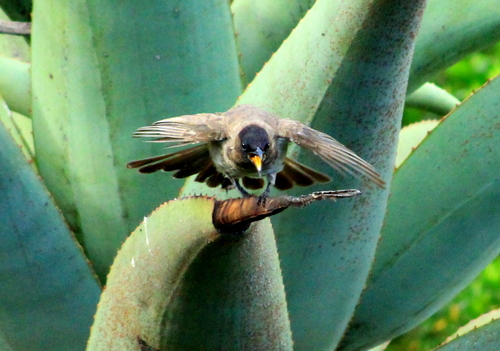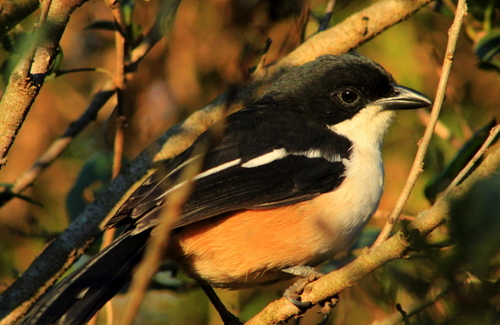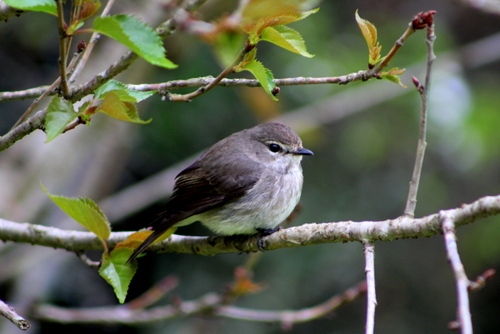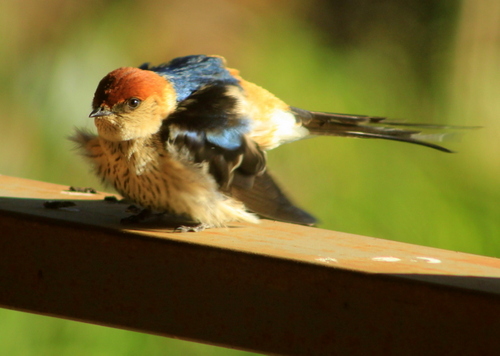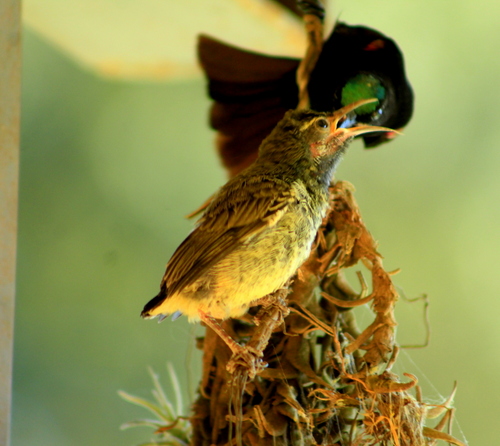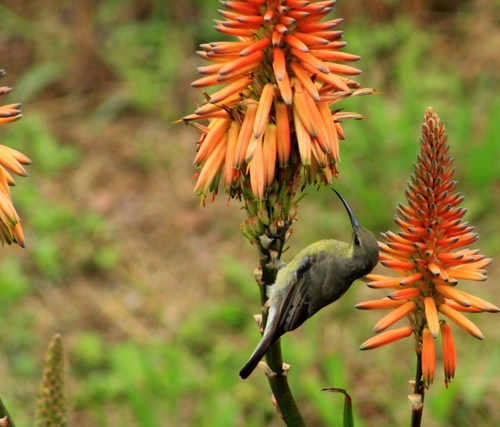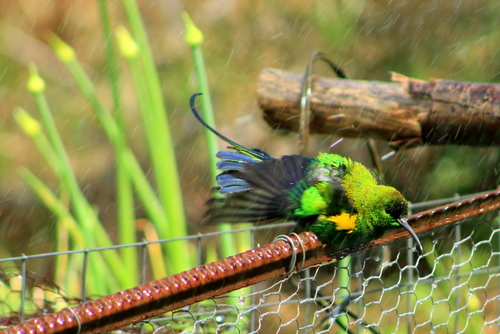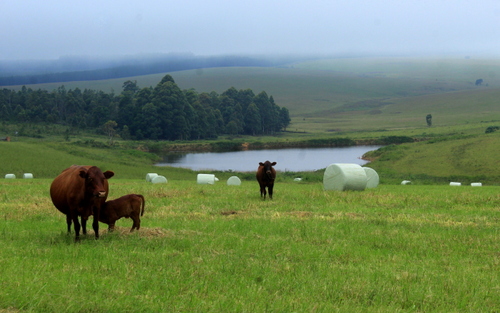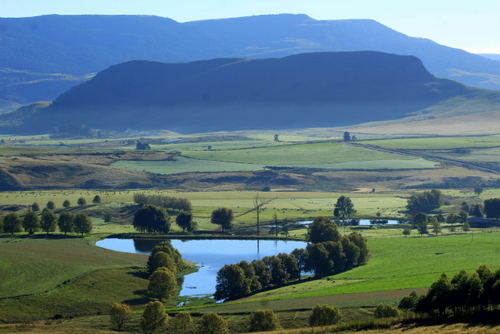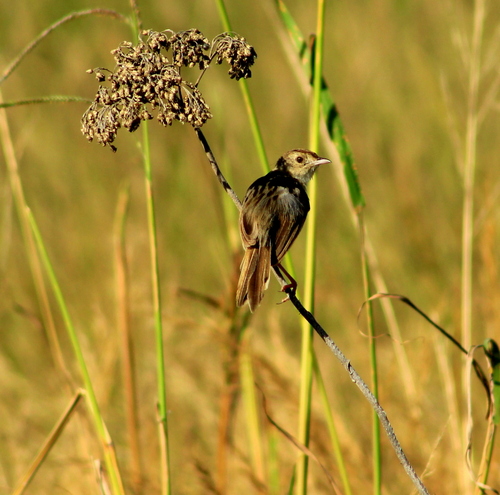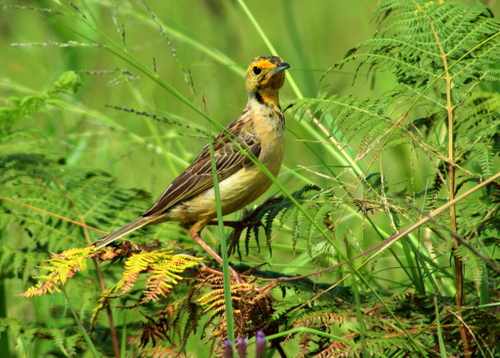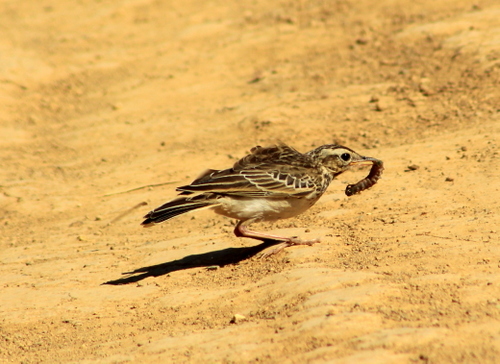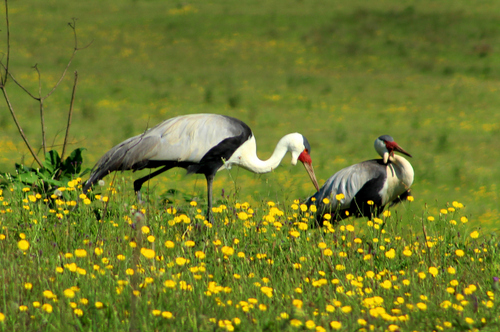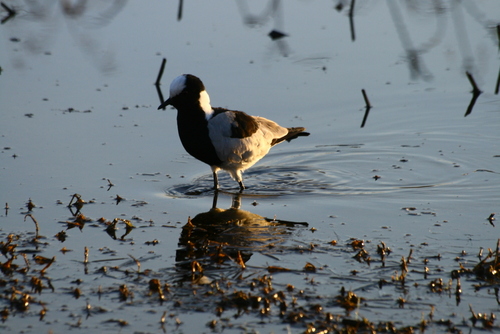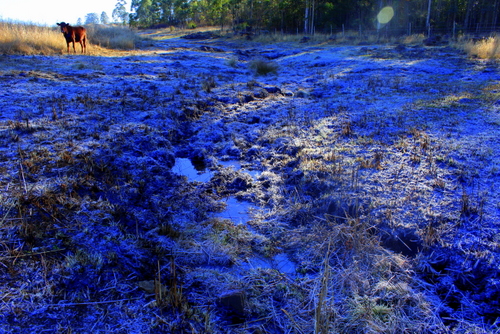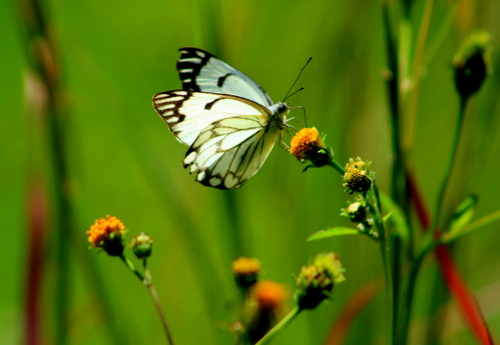“If a man does not keep pace with his companions, perhaps it is because he hears a different drummer. Let him step to the music which he hears, however measured or far away.”
Henry David Thoreau
It is probably my British heritage but there is nothing I love more than dashing madly about the countryside, in all types of weather – sunny, showery, cool, breezy – with a pair of binoculars in one hand and a camera in the other. Given this genetic predisposition of mine, it is perhaps just as well I live in an area where it is very easy to feed the habit.

Kusane is a farm with a commitment to conservation. All I have to do is step out of my front door, skip around the corner of the balcony and then slip across the gangplank that connects it to the ground beyond and I am into the unspoilt, open, pristine countryside. In a moment everything is altered. Any cares or worries I may have quickly get left behind. All my senses come alive. I am agog with anticipation. Another day of happy rambling awaits…

I never tire of these walks. The countryside is breathtakingly beautiful. There are subtle changes to it every day and every season. These become more pronounced after the first spring rains fall. The colours become more vivid and intense, wildflowers burst through the earth. As the summer storms intensify, the greater the profusion around me. In what seems like the blink of an eye, the deciduous trees start unfurling their new leaves. As sun and rain come together, the lengthening grass shimmies all around me. Great idle puddles lie across my path.
The first Yellow-billed Kites swoop over Kusane. Then swallows and other migrants arrive. They seem happy to be back and they let you know it. The cuckoos start calling, none more so than the ubiquitous ‘ Piet-my-Vrou‘ (Red-chested Cuckoo) who drones on for hours on end, often way into the night. In the dense canopy of trees up by the main house the Village Weavers go into a frenzy of nest-building as if operating according to some unconscious internal calendar.
While all this activity is erupting around me I ramble on. Amongst the comforting familiarity of everyday landmarks, I still stumble on the unexpected. One day, I might stop and watch a female Spurfowl emerge from a thicket with her stripey chicks in tow and scuttle over the road in front of me. Or a kestrel will skim across the edge of my vision, hover, then slip forward again, its head rock still, its sharp eyes scanning the wide landscape for the luckless rats, mice and moles that form its staple diet. On another day, I might see a regal Reedbuck ram, silhouetted against the outline of some rocky ridge, lord of all he surveys, Sometimes, too, in the magic of twilight, I will hear the plaintive, heart-wrenching call of a flock of cranes flying above me, wings gracefully waving. My heart soars out to reach them. They have become my spirit birds.

Living up here, close to the sky and the elements, nature has become both my solace and my passion. Nor is my love affair confined just to the boundaries of Kusane Farm. It extends down into the valley, laid out below as in a view from an aeroplane window, then stretches out across the plains to the Karkloof hills beyond – taking in, as it goes, the iconic Loskop hill which stands alone in the middle of it all like some ancient, all-knowing, sentinel. Local lore has it that this dominant feature once served as an important rain-making site. Judging by the tumultuous storms that get magically conjured up around it, I can believe that…

This, then, has become my heartland.
By going out each day and covering the same patch – or patches – I am slowly building up a permanent record of it. In the course of my exploring, I have taken hundreds and hundreds of photographs. I am not a professional photographer but I love taking pictures because they help me to remember. The ones below are but a small selection of these…
They represent a year in a life. They are my act of homage and recognition, my salutation, my love letter to this extraordinarily beautiful valley and the creatures who inhabit it.
GALLERY:
Nature is all circles and cycles and living up at Kusane you soon feel yourself becoming part of the ever-changing seasons. Winter, for example, is a time of low temperatures and dryness in which the animals and birds have to go searching for food…
This year (2021), it snowed for the first time since I moved up to Kusane. Hailing originally from Zimbabwe, I haven’t had much exposure to this white winter wonderland experience beloved of newspaper headline writers but standing on my balcony, in the silvery half-light, it felt quite magical…

The strange white stuff that fell from the sky didn’t seem to bother most of the weavers at Kusane who carried on with their daily routines. A few were not so sanguine…
Winter is also the firebreak-burning season at Kusane. It is a busy time of the year for the farm manager, Michael Ndlovu, our one-man fire brigade…
As the weather begins to warm up, the first wildflowers appear. I did not plant them. Their seeds get harboured safely in the earth ready to burst forth when the first spring showers fall…
The flowers, in turn, bring in butterflies, bees and other winged insects. Soon, there is a whole world of life in the fields…
Summer is storm season. Sometimes, when I am out walking, I will spot a deep purple wall coming towards me. The next thing I know I will be engulfed in hissing water and rumbling thunder. I get back home drenched to the core…

Approaching storm… 
…departing storm.
The real drama is often in the skies; an ever-shifting vista shot through with blue and rippling with an energy that can quickly turn explosive and jagged, even become slightly apocalyptic – a foreboding of mayhem…
A regular routine of mine, throughout the year, is to drive through the valley to the Karkloof Farmer’s Market on a Saturday morning. I go there, mostly, because I like browsing around Huddy’s second-hand books where there are regularly literary gems to be found. The journey can often be as rewarding as the destination…

The Karkloof is a good place to spot cranes. Cranes are becoming increasingly rare everywhere so we are lucky to have all three South African species (including the critically endangered Wattled Crane. There are only around 260 left) occurring here. There is not a day in my life that is not improved by seeing them…




Occasionally, driving through the farmlands, you come across other unusual birds like these two…

Denham’s (formerly Stanley’s) Bustard 
Bald Ibis
The road to the Karkloof Farmer’s Market takes me past the iconic Loskop, a hill that continues to exert a strange pull on my imagination…

The Karkloof area is good cycling and running country too…

The hour after dawn is nature’s happy hour, a moment when the world still belongs to animals such as this regal Reedbuck ram, surveying his domain…

It is also a good time to see birds because they are usually at their most active then…

Three Midland’s ‘specials’: Malachite Sunbird… 
…Black-winged Lapwing… 
…Buff-streaked Chat.
To try and seduce birds to come and live at my home I have erected two bird tables on either side of the building. By far the most regular and numerous visitors are the Village Weavers but a host of other birds have taken to frequenting it…

Rock Pigeon on bird feeder 
Red-winged Starling (male)
This Cape Sparrow and African Firefinch like to drop in as well…
Seasons of mist and mellow fruitfulness. Kusane lies in the KwaZulu-Natal mistbelt. In summer the mist comes drifting in most evenings engulfing the countryside in a blanket of damp grey…

The sunrises at Kusane can be spectacular…

The sunsets equally so…





























